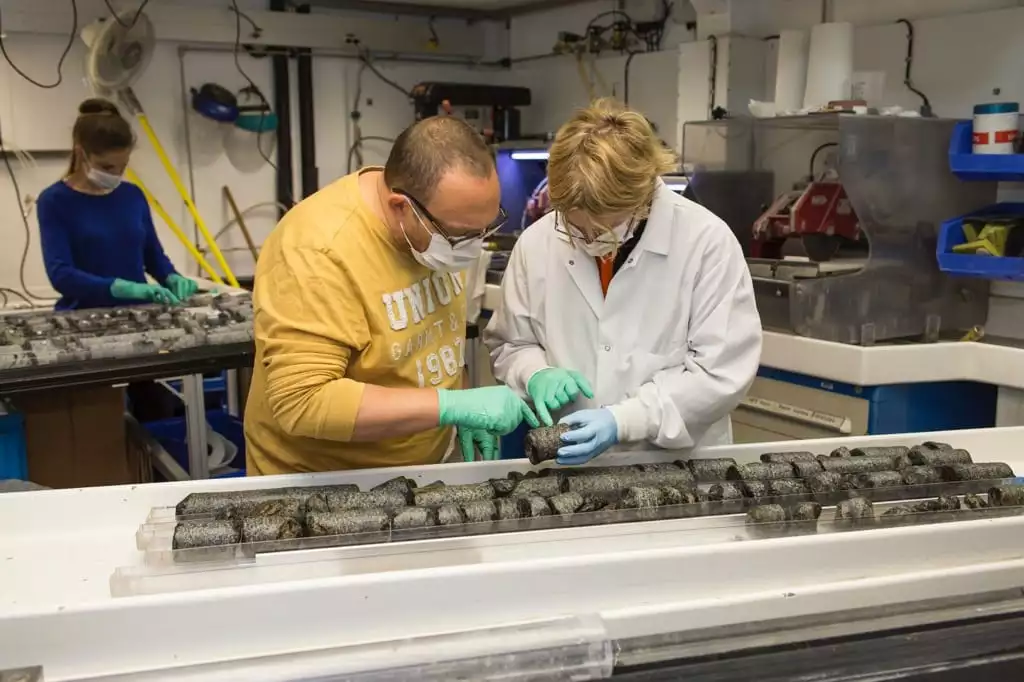Every time we think we’ve figured out the limits of where life can exist, we discover extremophile organisms thriving under conditions we’d previously ruled out. The latest example comes from studies of rock cores drilled from the floor of the Indian Ocean, where microbes were discovered alive and well under almost half a mile of rock.
The discoveries were made as part of the International Ocean Discovery Program (IODP), which studies samples of rock and sediment taken from beneath the seafloor. Normally, it’s to investigate the historic climate records preserved there, but in this case an international team of scientists found evidence of life.
The researchers scoured rock samples taken from the lower oceanic crust, searching for genetic material and organic molecules. When they found it, they performed cell counts and then grew samples in lab dishes. All together, these methods revealed a relatively small but diverse population of microbes living as deep as 2,600 feet (792 m) below the ocean floor.
“They are tiny, around 1 micrometer,” says Jason Sylvan, an author of the study. “We can’t tell the age, but assume them to be currently extant, so not necessarily old, but in an environment that is extreme and subsurface. We believe this is the first research to show active microbes in this environment and to be able to describe their lifestyles using such a broad array of data streams.”

But it’s not exactly comfortable down there. There’s no light, food is scarce, and space is limited even by microbial standards. The researchers were curious about how the organisms handled these conditions, so they analyzed the gene expression of the messenger RNA they found. This revealed a few of the survival strategies the microbes are likely using.
Some of the organisms seemed to be able to store carbon in their cells, allowing them to stockpile reserves for when they needed it. Others turn to nitrogen and sulfur for energy. Some may be able to recycle amino acids. And some invest in breaking down tough compounds to get at the carbon locked away inside.
The team says that the study reveals just how hardy microbial life can be, even in environments that might be presumed to be too hostile. After all, past studies have shown that life can be found in the hottest, driest deserts and in the coldest polar ice and snow. And this persistence has implications far beyond our own planet.
“This environment and lower oceanic crust is comprised largely of types of material called gabbro and peridotite, and these allow for some chemical reactions that were likely present on early Earth and also on other planets where water and volcanic rocks interact,” says Sylvan. “It also shows us that microbial life is likely to persist wherever there is room for it and that it will evolve ways to live in those difficult environments.”
The research was published in the journal Nature.




